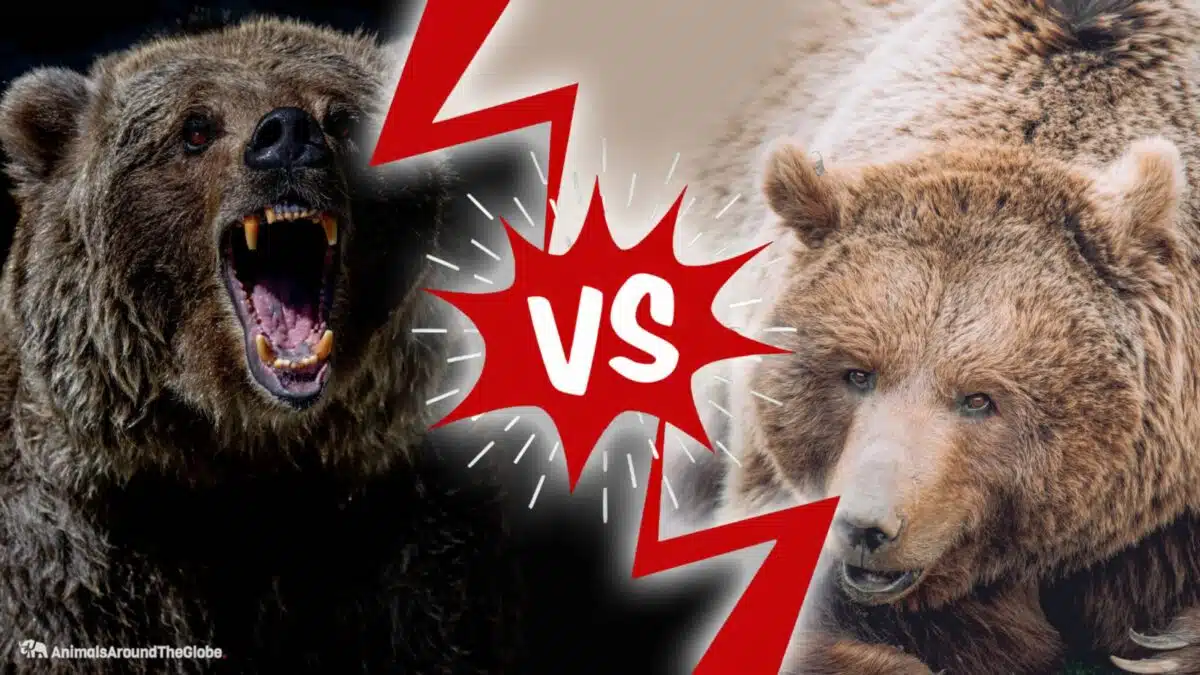Did you know that the grizzly bear is in fact a sub-species of the brown bear? Naturally they share many traits, but they also possess many differences. This comparative post, brown bear vs. grizzly bear, will tell you all about them.
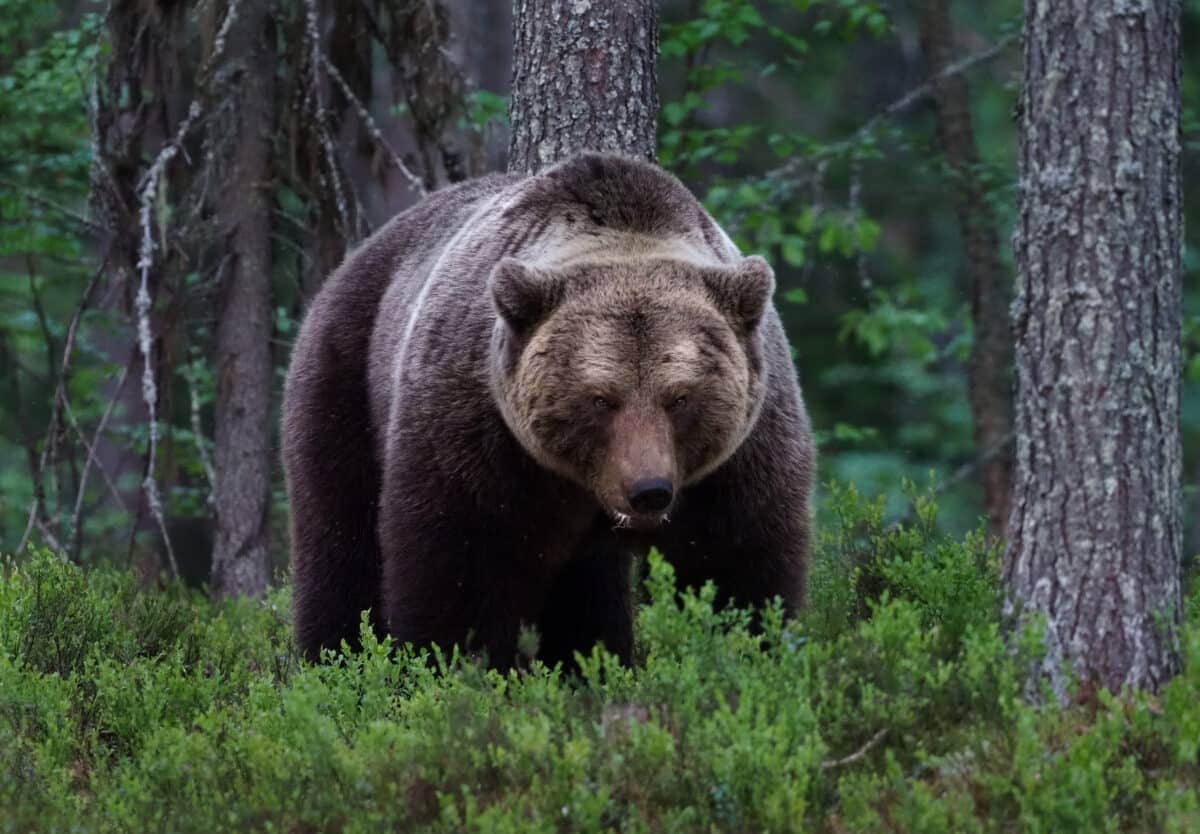
Are you among the many people out there who love fluffy bears? What are your thoughts about wild bears?
Bears are dangerous wild animals, and they differ widely from each other, like the brown bear vs. grizzly bear, which resemble each other because grizzlies are in fact a subspecies of brown bears. Nonetheless, there are several characteristics that distinguish them from each other.
If you’ve ever visited a national park and been lucky enough to catch a bear on camera but can’t seem to identify which kind of bear you saw – this post is for you. This guide will help you to identify the bear accurately.
So let’s continue!
Comparing Brown Bear And Grizzly Bear
| Brown Bear | Grizzly Bear | |
| Body Weight | Male: 300 to 860 pounds Female: 205 to 455 pounds | Male: 440 to 660 pounds Female: 240 to 350 pounds |
| Body Length | 3 to 10 feet | 5 to 8 feet |
| Claws | 3 to 5 inches long | 2 to 4 inches long |
| Habitat | High mountain forests, ice fields, fringes of deserts, tundra and alpine meadows. | Prairies, Alpine meadows, forests, and woodlands. |
| Distribution | Anatolia, Caucasus, Iran, Finland, Russia, Central Asia, Carpathian region. | Western Canada, Alaska, Montana, Wyoming, Idaho, Southern Colorado, Washington. |
| Conservation Status | Least concern species on the IUCN list. | Threatened bear under the Endangered Species Act. |
| Food | Roots, berries, carrion, sedges, grasses, ground squirrels, and cow parsnip. In several regions of Alaska, they prey on caribou and moose. | Forbes, grasses, fruits, fleshy roots, and berries. Hunts rodents like carrion, ground squirrel, fish, mainly salmon, and hoofed animals like elk, moose, deer, and caribou. |
| Population | Approximately 200,000 inidividuals. | In North America: 55,000 individuals. In Canada: 21,000 individuals. In Alaska: 30,000 individuals. |
Species and subspecies:
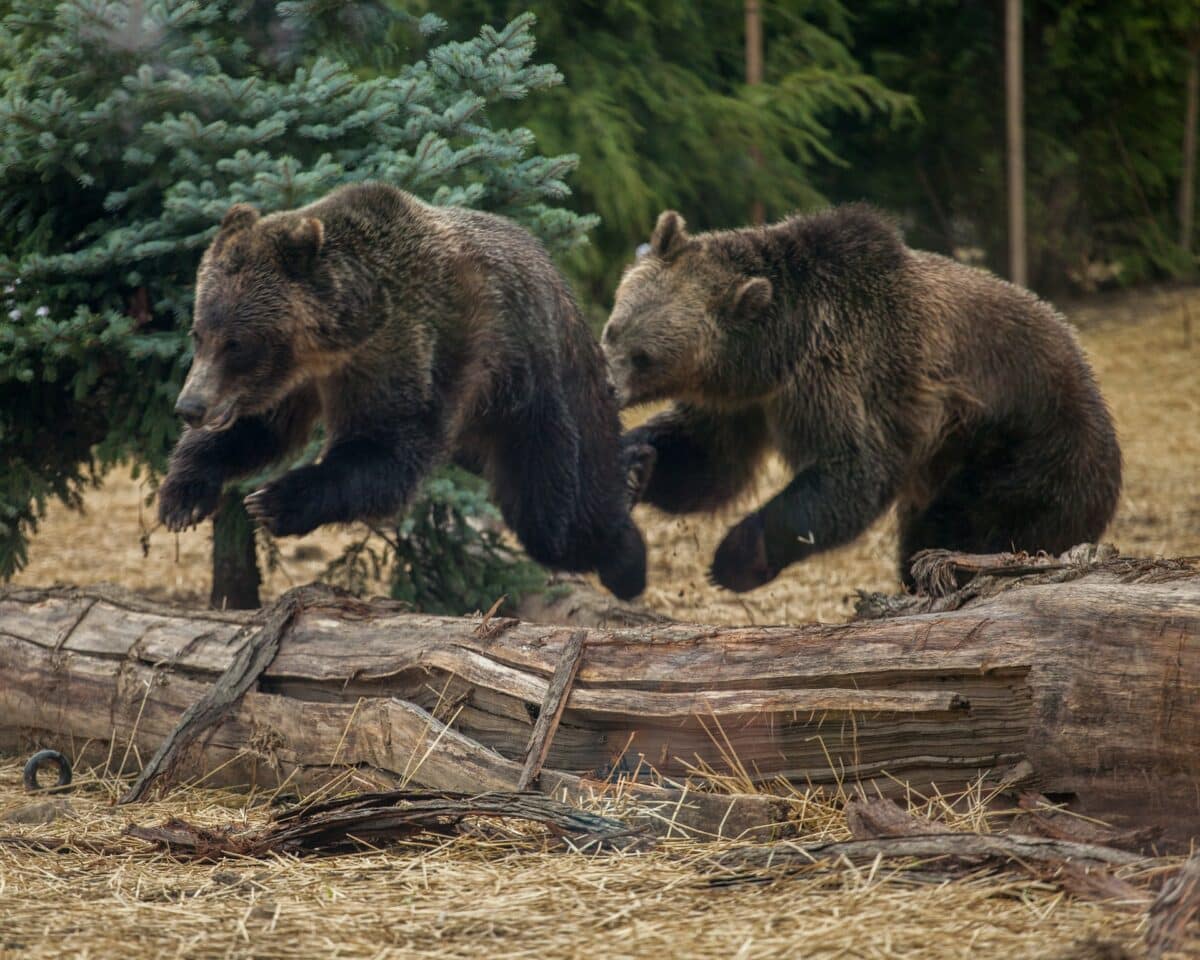
Before starting the brown bear vs. grizzly bear discussion, it would be helpful to understand what species and subspecies are.
Species:
Organisms capable of producing offspring and sharing common characteristics are called species. For example, Brown Bear.
Sub-Species:
A group of organisms that falls within a category of species. They inhabit different geographical regions and also vary in shape, size, and other physical characteristics, but which may interbreed with each other are called subspecies. For example, Grizzly bears are a subspecies of brown bears.
Brown Bear vs. Grizzly Bear
Brown bear and grizzly bear have some similarities and differences, and here we will make it easy for you to say which one you see quickly.
Brown Bear vs. Grizzly Bear: Scientific Classification
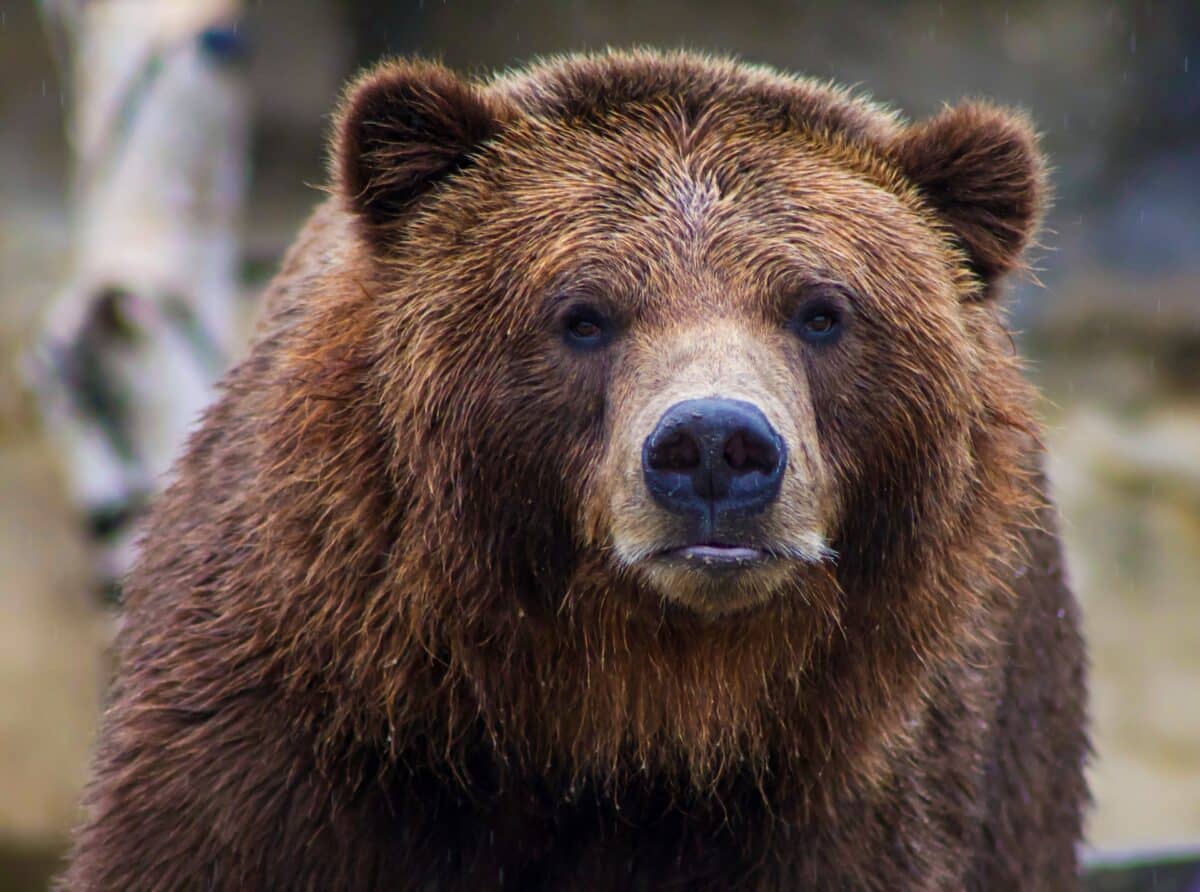
Brown Bear Scientific Classification:
Kingdom: Animalia
Phylum: Chordata
Class: Mammalia
Order: Carnivora
Family: Ursidae
Genus: Ursus
Species: U. arctos
Grizzly Bear Scientific Classification:
Kingdom: Animalia
Phylum: Chordata
Class: Mammalia
Order: Carnivora
Family: Ursidae
Genus: Ursus
Species: U. arctos
Subspecies: Ursus arctos horribilis
Brown Bear vs. Grizzly Bear: Other Names
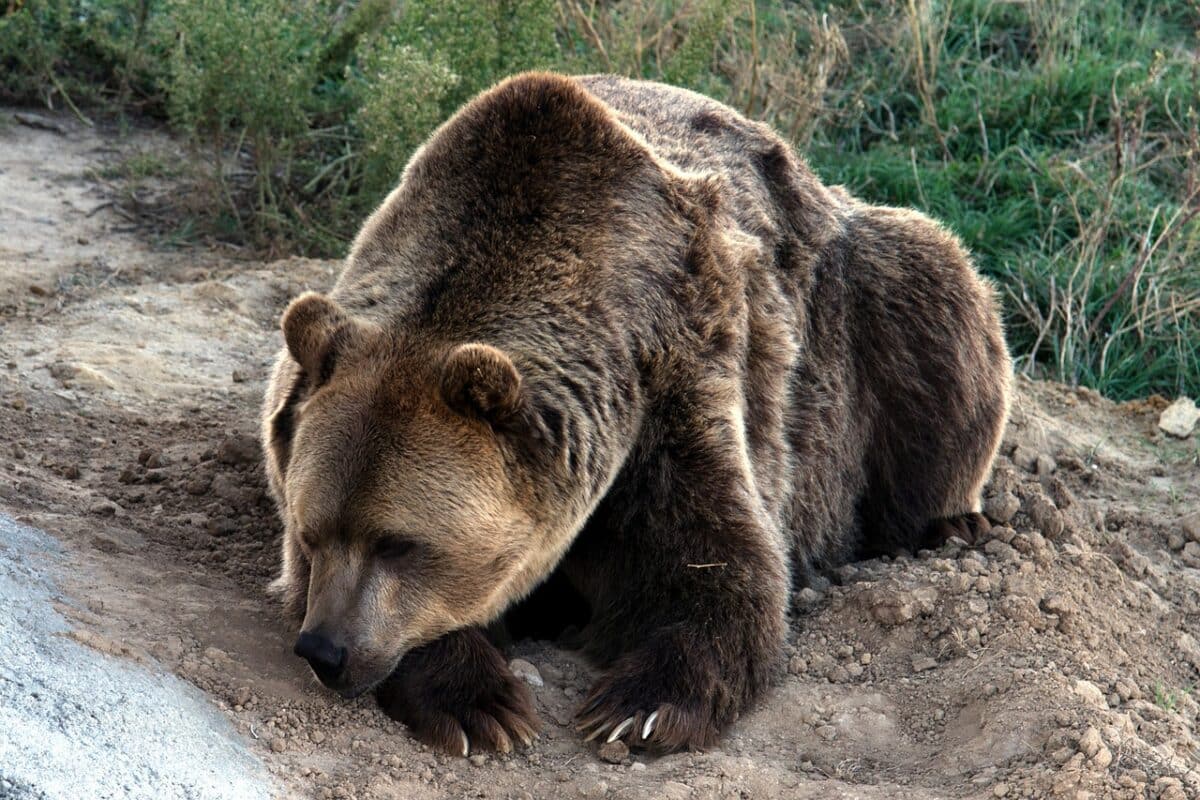
Brown Bear
Brown bears are also called Kodiak bears. Some people confuse brown bears with grizzlies and consider them the same, but this is incorrect and inaccurate, as the grizzly is a subspecies of the brown bear.
Grizzly Bear
Grizzly bears are also famously called North American brown bears or just grizzly.
Brown Bear vs. Grizzly Bear: Body Weight and Size
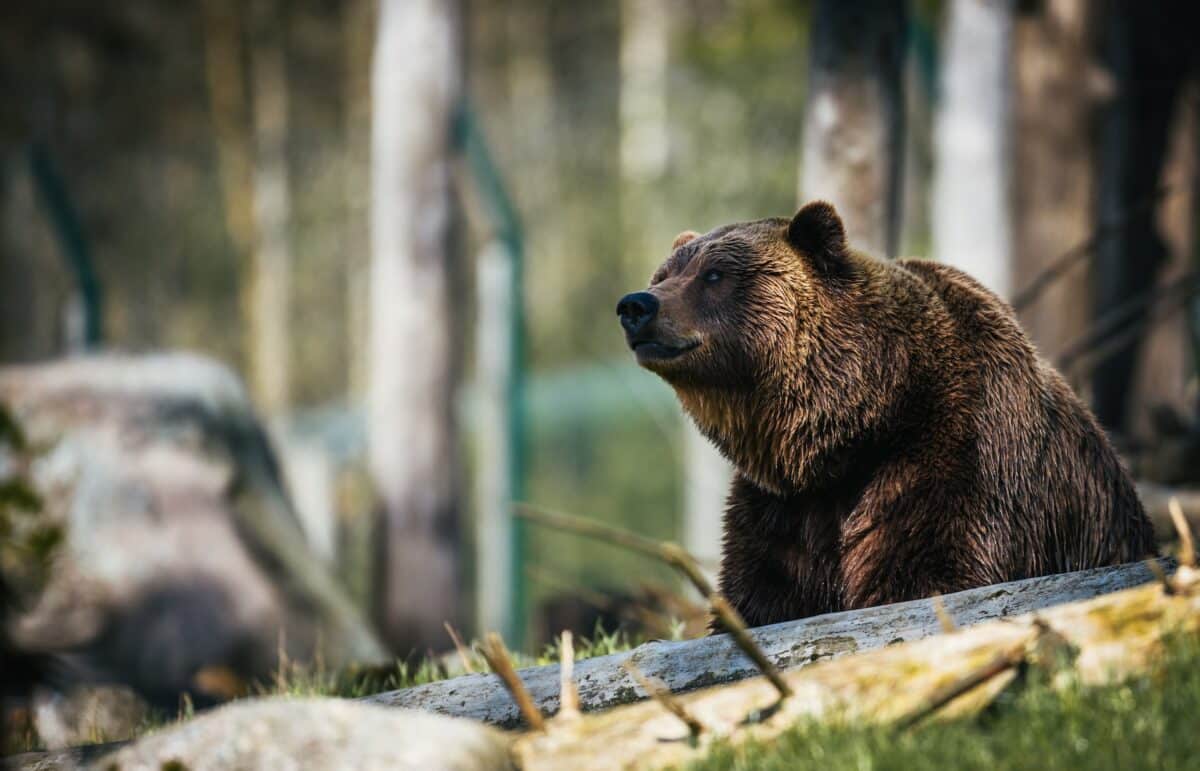
Brown Bear
Male Brown bears have 300 to 860 pounds body weight, whereas females weigh around 205 to 455 pounds.
The male and female brown bears have the same tail length of 2,4-8 inches.
Brown bears have a 5 ft shoulder height.
Grizzly Bear
The female grizzly bear is lighter than the male. The average female weight is 240 to 350 pounds, whereas the male grizzly weighs 440 to 660 pounds.
Body Length
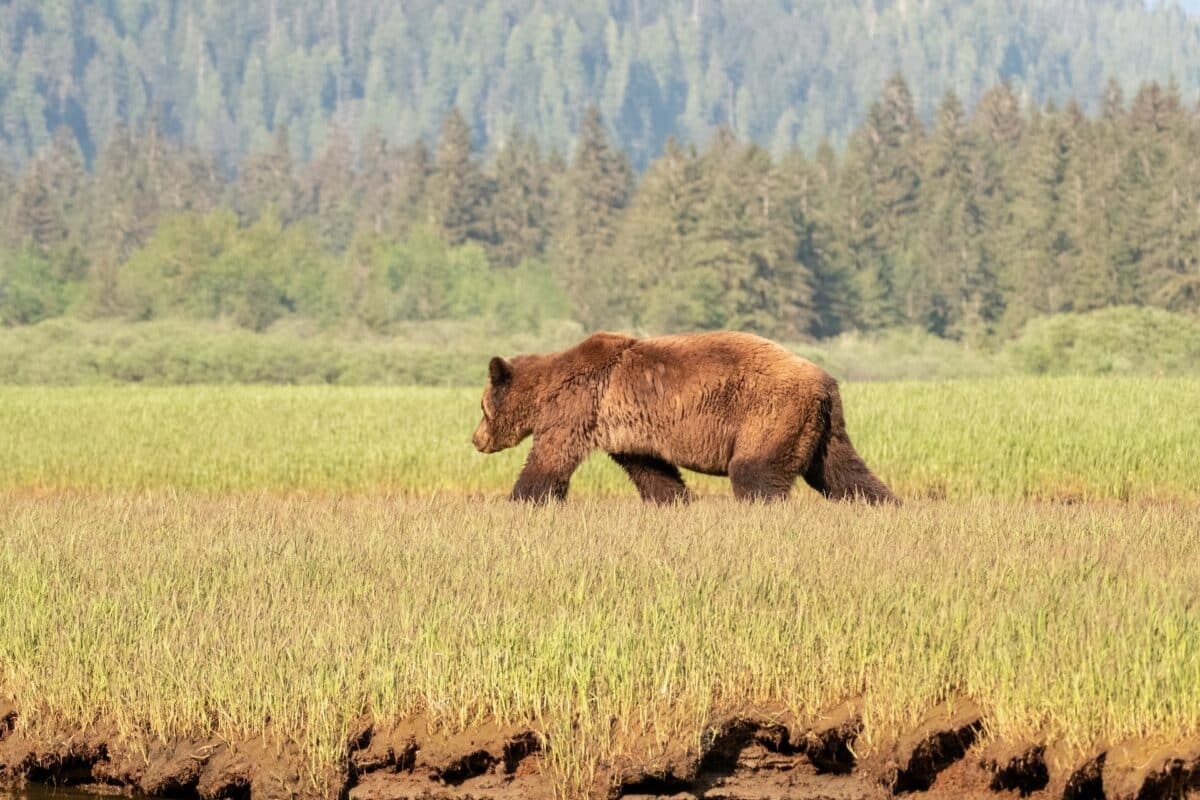
Brown Bear
Brown bears measure 3 to 10 feet in length.
Grizzly Bear
Grizzly bears are 5 to 8 feet long.
Brown Bear vs. Grizzly Bear: Physical Appearance
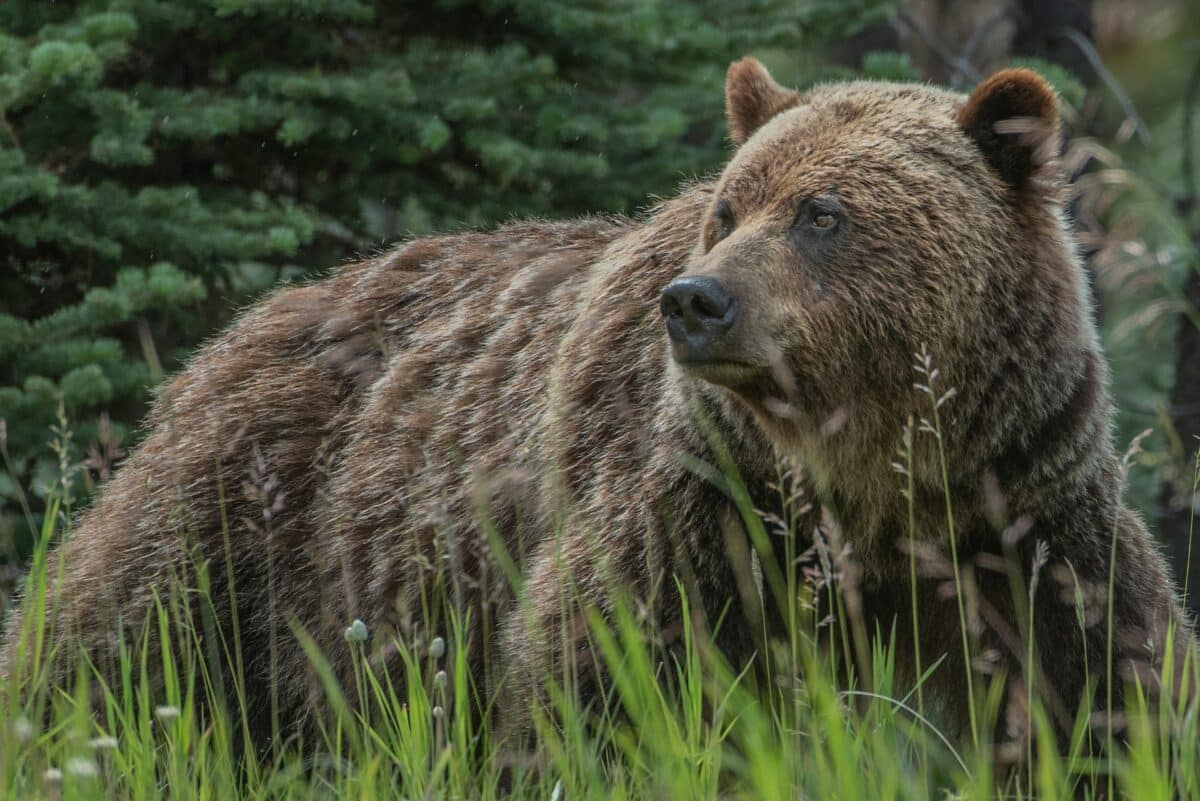
Brown Bear
Brown bears have small round ears and eyes, a snout that is dished in, and shoulder humps. Their powerful bodies make them heavier. Brown bears have darker hues of color.
Grizzly Bear
Grizzly bears have rounded, short ears and dished faces. Grizzly bears also have a large shoulder hump. Their hump provides the Grizzly with extra strength for digging.
Grizzlies have extensive claws on their front feet that help them dig dens and find food.
The fur of adult grizzlies has a grizzled or silver-tipped appearance.
Brown Bear vs. Grizzly Bear: Claws
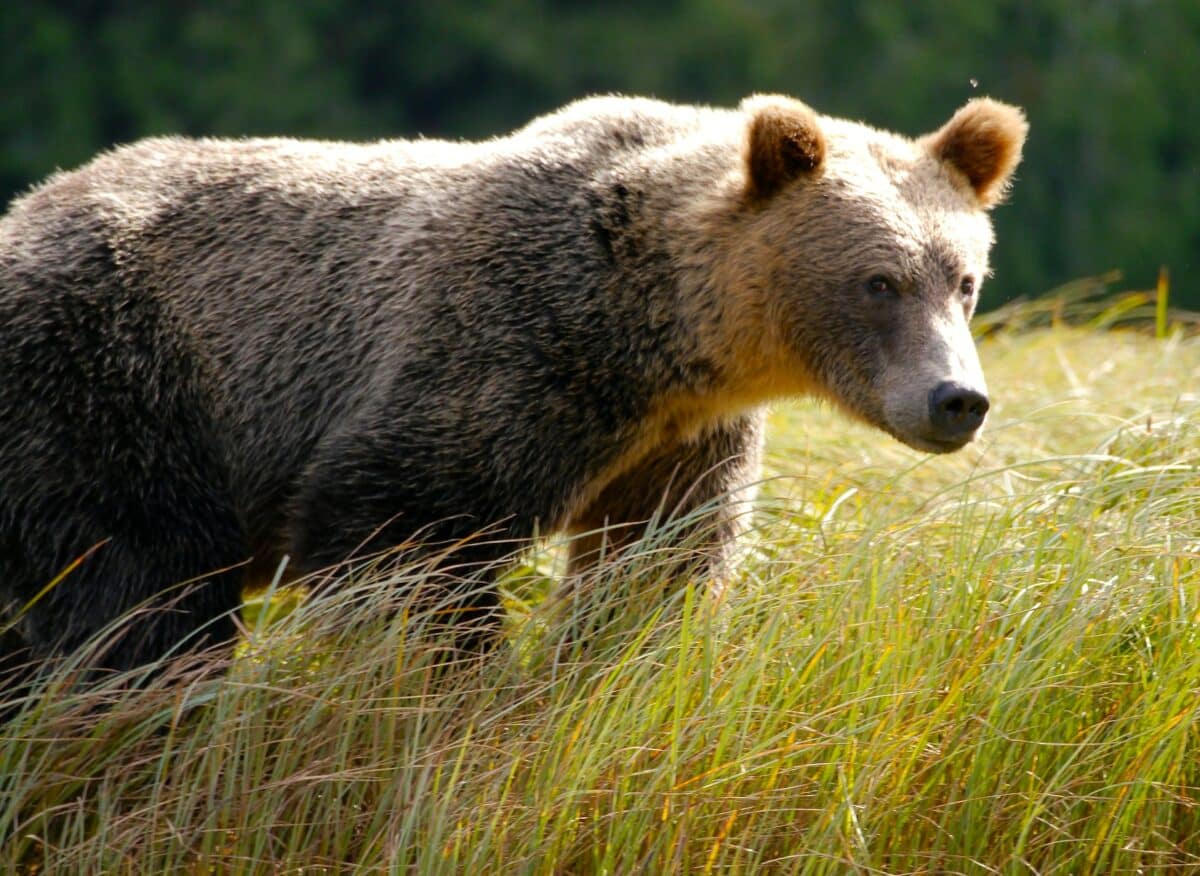
Brown Bear
The brown bear claws are 3 to 5 inches long, which helps them dig in the ground to find food and make dens. Their claws are curved and range in color from yellow to almost brown.
Grizzly Bear
Grizzlies’ front claws are very long and are 2 to 4 inches long. They use these claws to dig up the bulbs and roots of plants and to make den sites. Sometimes their claws are white.
Brown Bear vs. Grizzly Bear: Paws
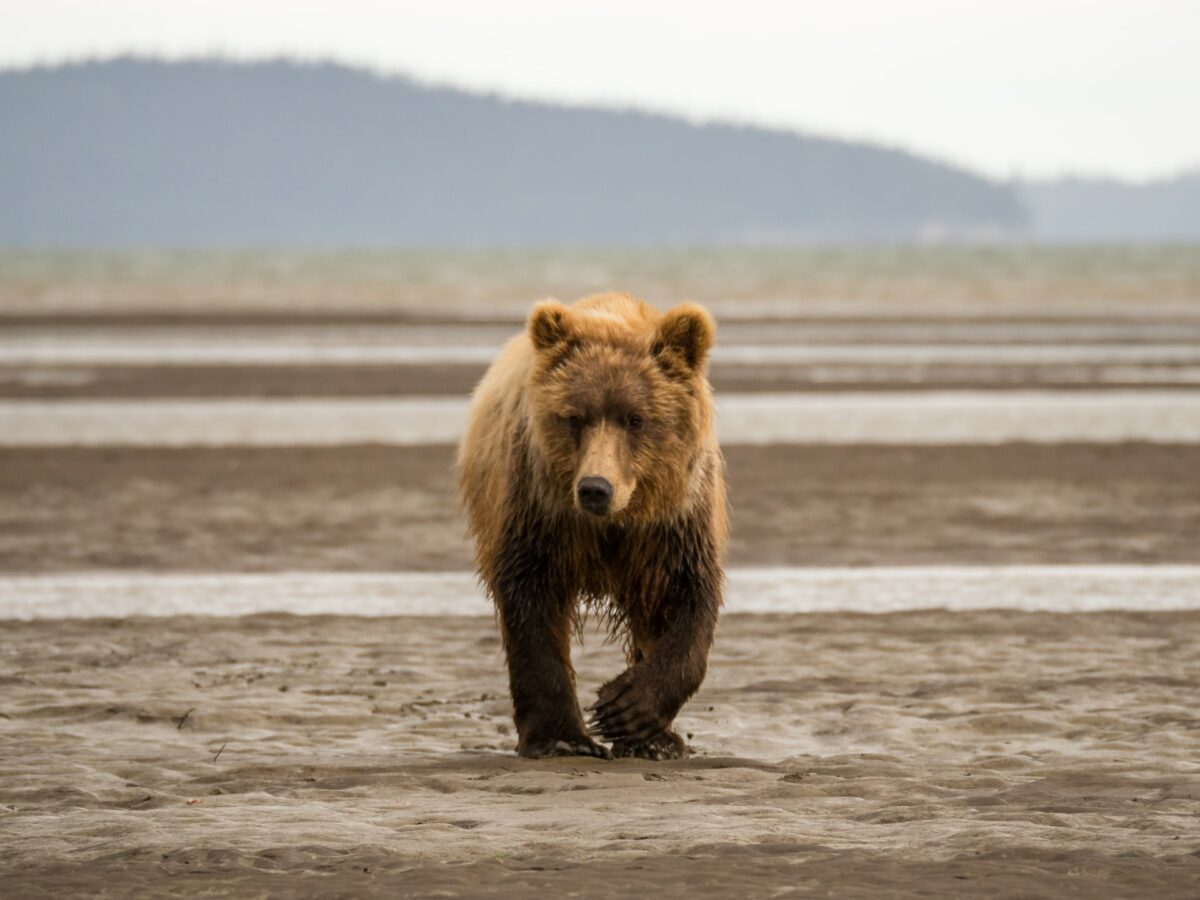
Brown Bear
Brown bears have large paws, and the front two paws have more extended claws than the back paws. They use their properly structured paws for various purposes, including swimming, climbing trees, and running fast.
Grizzly Bear
The paws of the grizzly bear are brownish or black, and the skin on the pad is wrinkled.
Brown Bear vs. Grizzly Bear: Distribution and Habitat
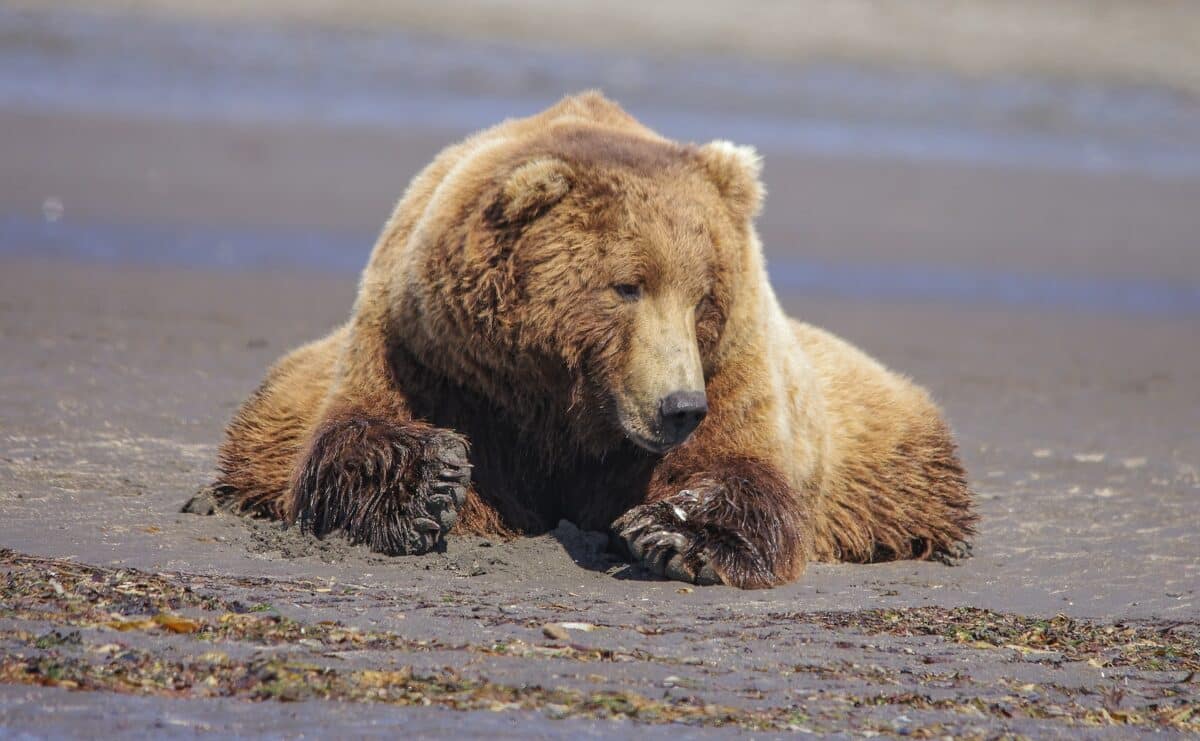
Brown Bear
Brown bears are not limited to only one kind of habitat. They are widely distributed throughout the world. However, they also don’t like some habitats; therefore, their ideal habitats are high mountain forests, fringes of deserts, and ice fields.
In North America, brown bears occur along coastlines, in alpine meadows, and in the tundra. In Europe, they made mountain woodlands their home, whereas in Siberia, they are seen in the forests.
Brown bears are distributed in various regions, including Caucasus, Anatolia, Iran, Finland, Scandinavia, Hokkaido, the united states, Canada, China, the Himalayas, Central Asia, some parts of Russia, and the Picos de Europa, and the Carpathian region.
Grizzly Bear
Grizzlies’ natural habitats are prairies, alpine meadows, forests, and woodlands. They like to live along streams and rivers in several kinds of habitats.
As we already said, grizzly bears are a subspecies of brown bears, but still, their habitat and distribution vary greatly. The grizzlies reside in western Canada, Alaska, Montana, Wyoming, Idaho, southern Colorado, as well as in Washington.
Historically the grizzlies ranged from the pacific ocean to the Mississippi river and from Alaska to Mexico. But unfortunately, due to the western expansion, their population reduced significantly.
Brown Bear vs. Grizzly Bear: Population
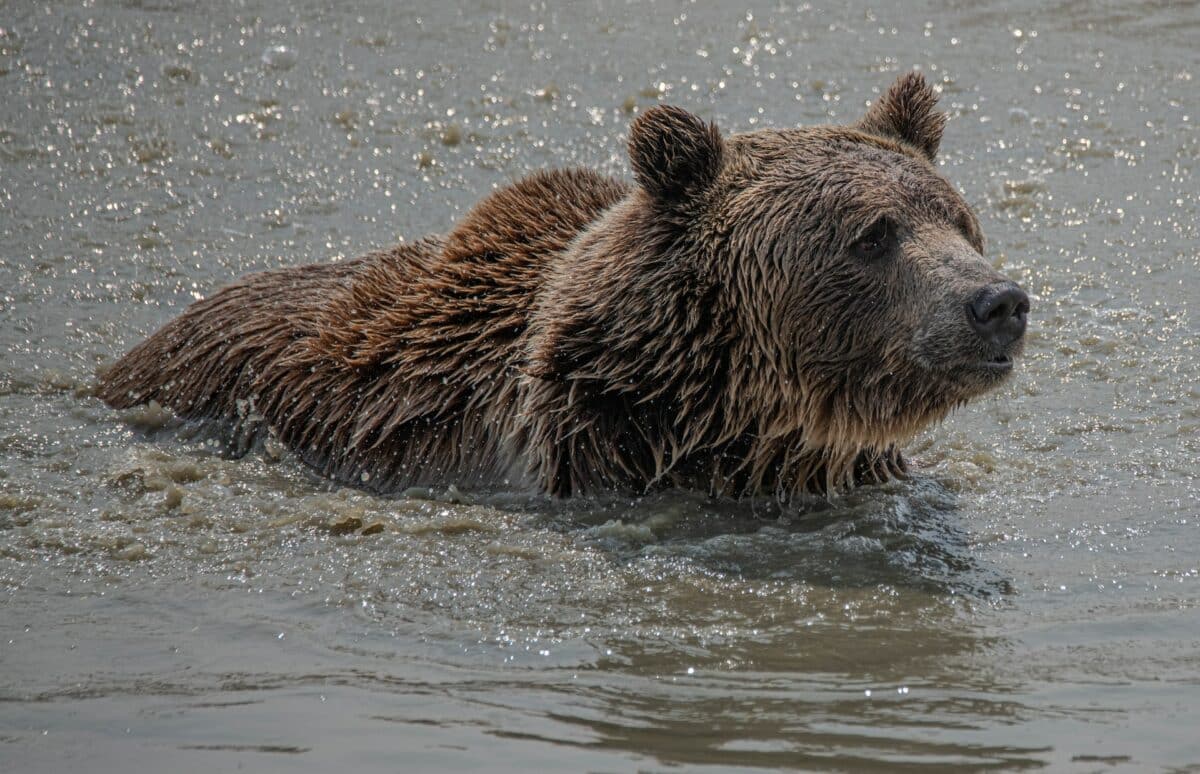
Brown Bear
The population of brown bears is approximately 200,000 throughout the world. 120,000 of them are found in Russia, showing that the largest population of brown bears exists in Russia.
Grizzly Bear
In the U.S., the number of grizzly bears is 85,000 – out of which 30,000 live in Alaska. Whereas in Canada, the population of grizzlies is 21,000.
Brown Bear vs. Grizzly Bear: Conservation Status
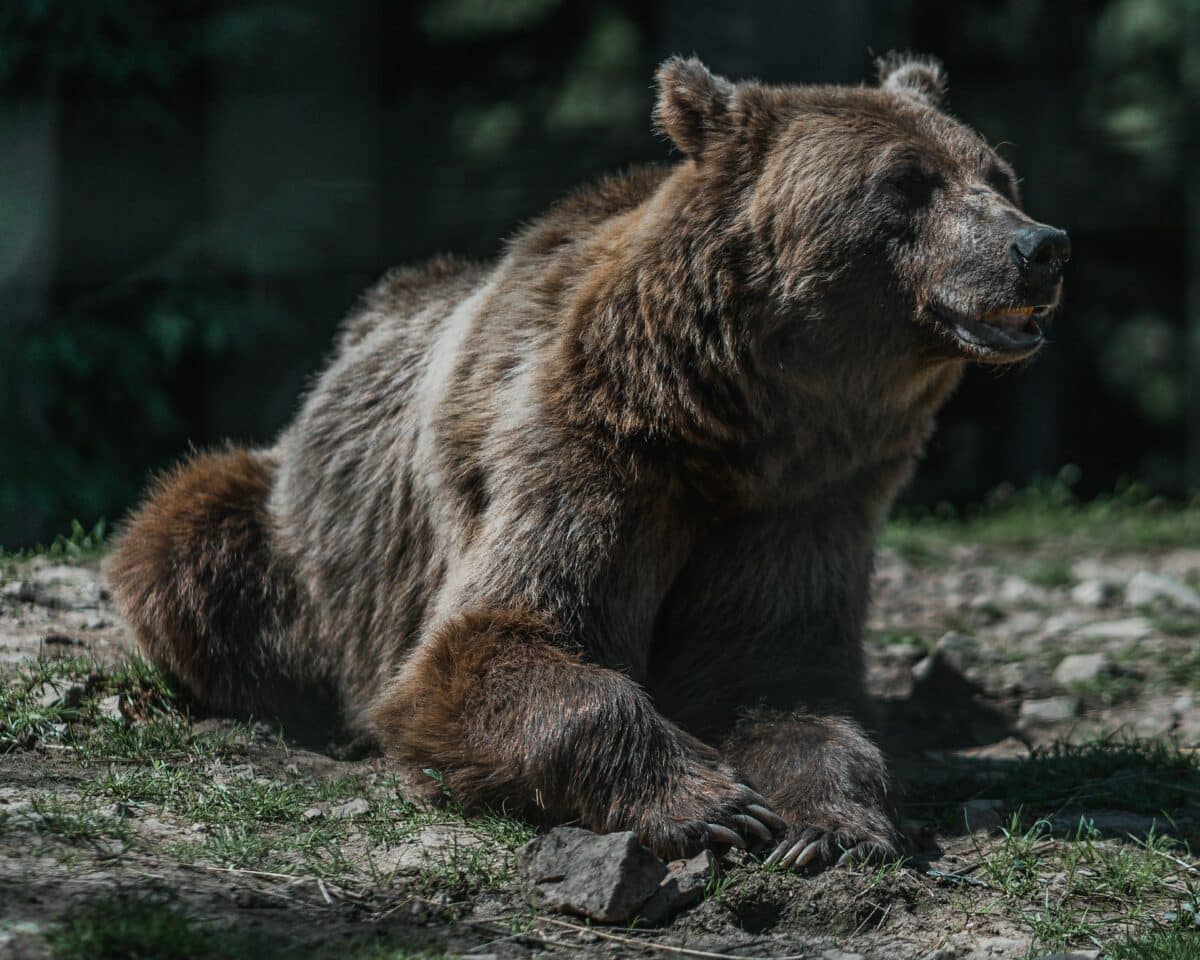
Brown Bear
According to IUCN, brown bears’ conservation status is the “least concern species” despite having faced local extinction.
Grizzly Bear
The grizzly bear is considered a threatened bear under the ESA ( Endangered Species Act); therefore, their protection, conservation, and preservation are essential. Thus hunting, harming, shooting, killing, capturing, trapping, harassing, wounding, and pursuing grizzlies is banned except for defense.
Brown Bear vs. Grizzly Bear: Food
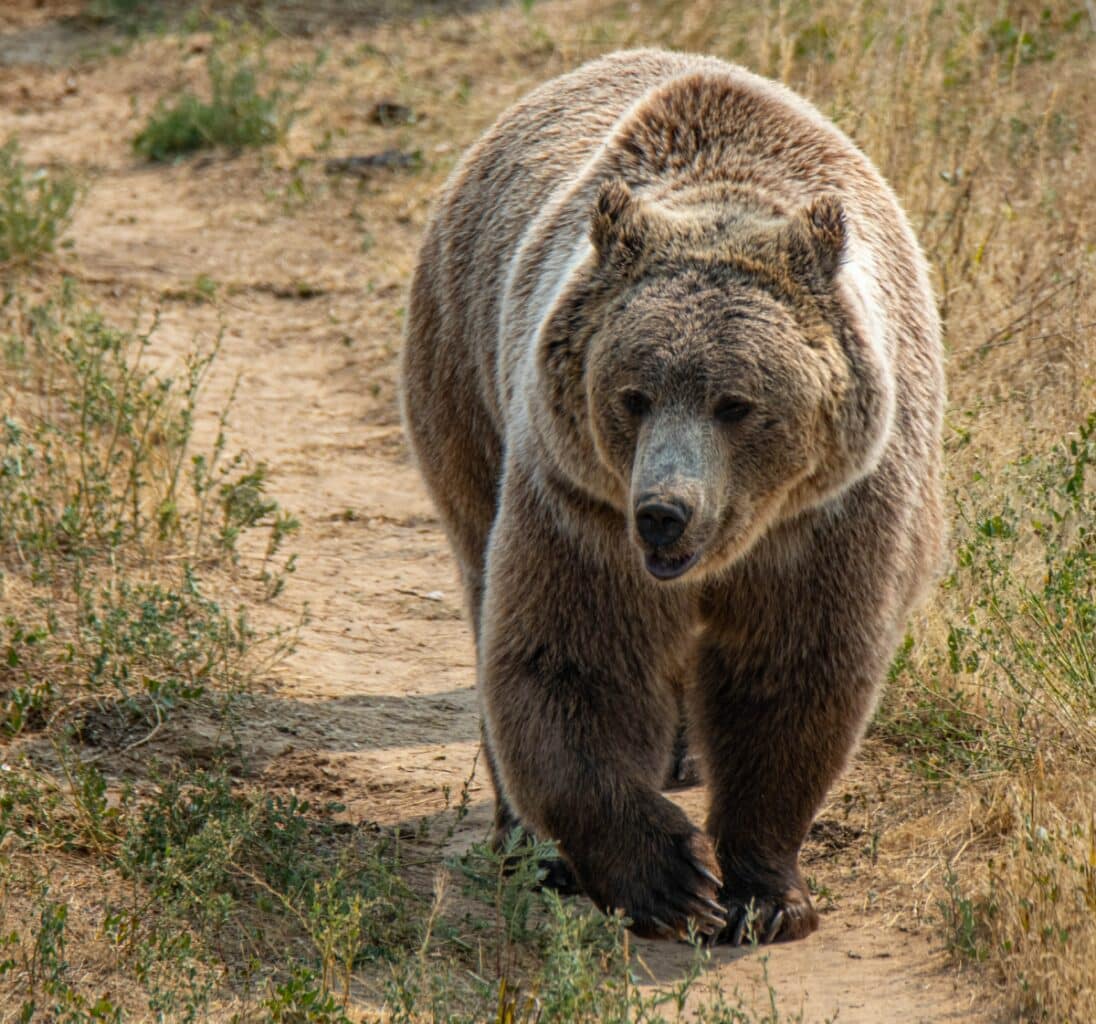
Brown Bear
Humans like to eat a variety of food that varies in taste; the same goes for the brown bear. Most commonly, brown bears feed on roots, berries, carrion, sedges, grasses, ground squirrels, and cow parsnip.
In several regions of Alaska, brown bears prey on caribou and moose.
Grizzly Bear
Grizzlies are omnivores, meaning they eat food from both animal and plant sources. They commonly eat forbs, grasses, fruits, fleshy roots, and berries.
These species also hunt rodents like carrion, ground squirrel, fish (mainly salmon,) and hoofed animals like elk, moose, deer, and caribou.
Grizzlies primarily inhabit inland; therefore, they mostly eat plants.
This indicates that the food of both the brown bears and grizzly bears are almost similar. Therefore if living in the same region, they would compete with each other for food.
Brown Bear vs. Grizzly Bear: Color
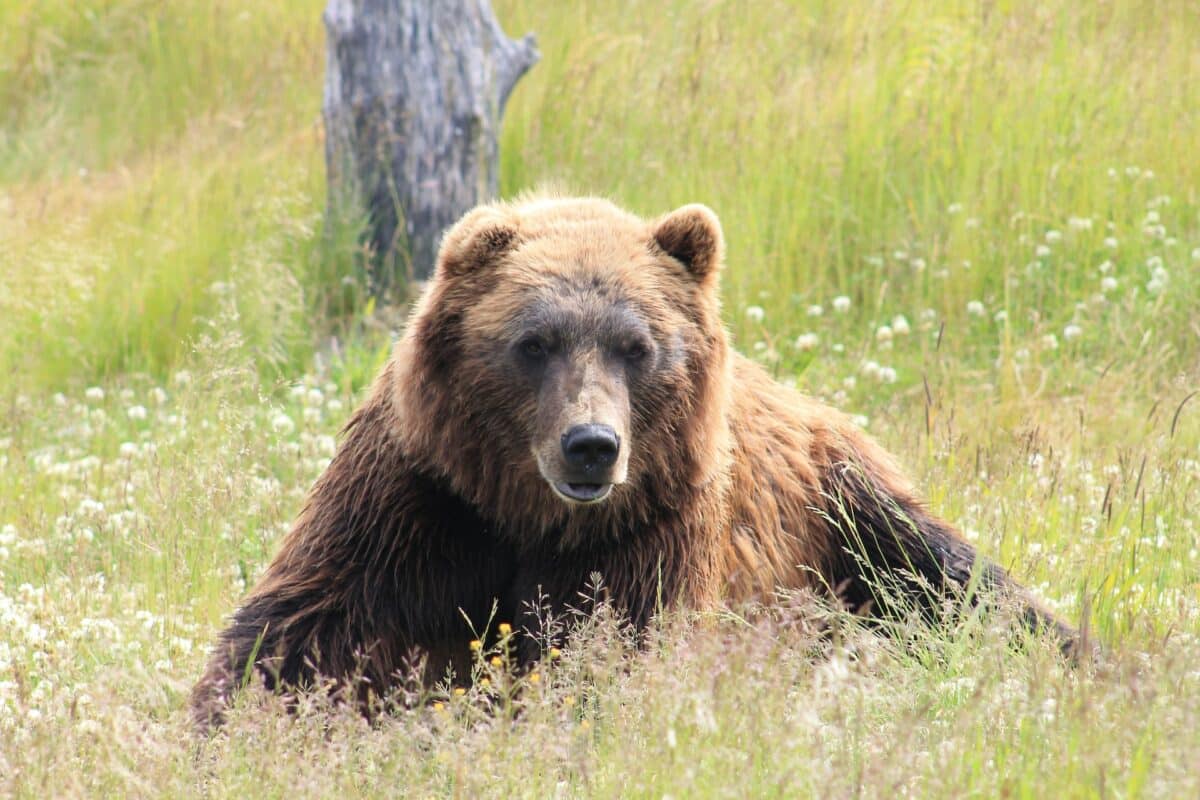
Brown Bear
Although it is called a brown bear, its body does not only have brown fur. Some brown bear furs are silver, gold, shades of brown and near black, and gray or pale tan.
Grizzly Bear
Like brown bears, grizzly bears also vary in appearance. They range from a very light tan, almost white, to a dark brown color.
Brown Bear vs. Grizzly Bear: Behavior
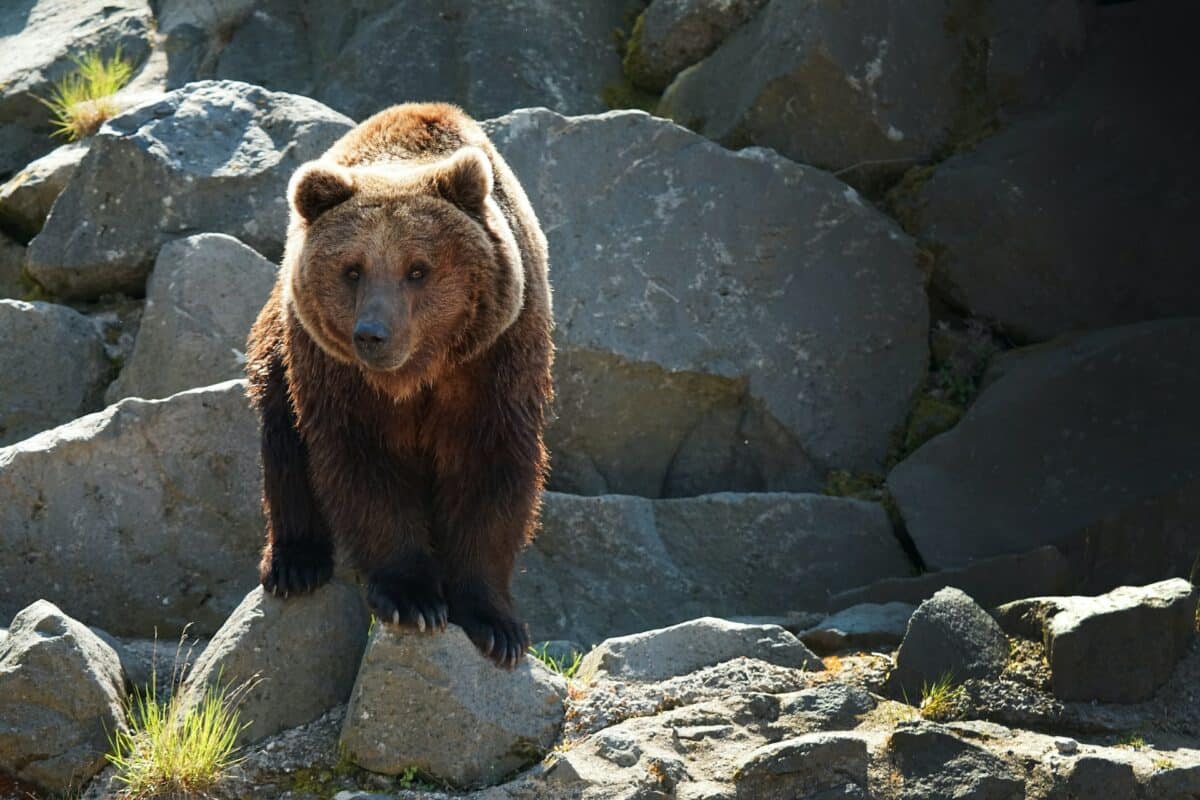
Brown Bear
Adult brown bears are more active in the evening and early morning; thus, they are crepuscular. Brown bears that live near humans are nocturnal, whereas young bears are energetic during the day. Adult bears like to live solitary lives, but the females with cubs live in gatherings with their offspring.
Grizzly Bear
The grizzlies are active during night and day, but they often change their behavior to avoid humans in regions of great human use.
During the day, the grizzlies in dense vegetation rest in day beds such as alders, tall grass, dense forest, and willows.
Brown Bear vs. Grizzly Bear: Cubs
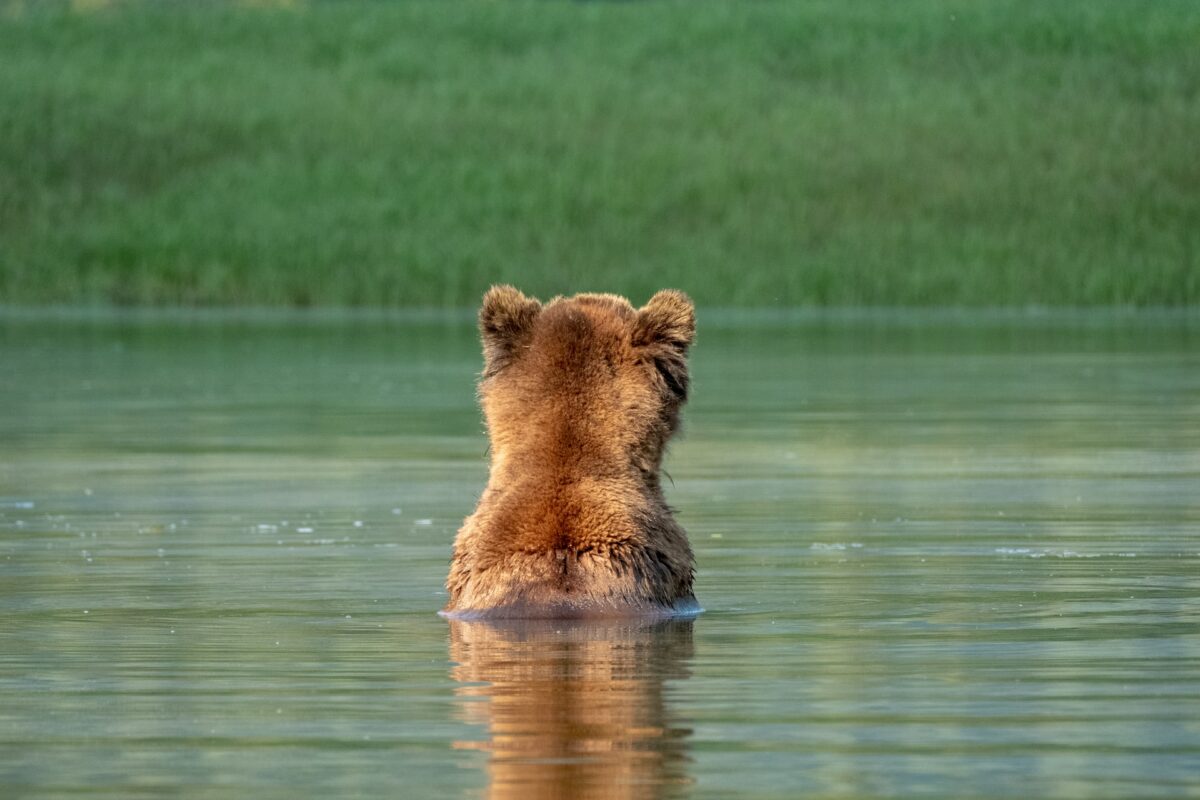
Brown Bear
Brown bear cubs are born hairless, tiny, and weigh less than half a pound. Most commonly, a female brown bear has a litter of one to three cubs but sometimes has four cubs as well. Brown bear cubs depend on their mother for food and stay with their mamas for at least three years.
Grizzly Bear
Interestingly, the grizzlies cubs are primarily born in pairs without hair and are blind and toothless. They get strength by feeding on their mother’s milk and gain the ability to nestle into mother grizzlies.
Brown Bear vs. Grizzly Bear: Courtship
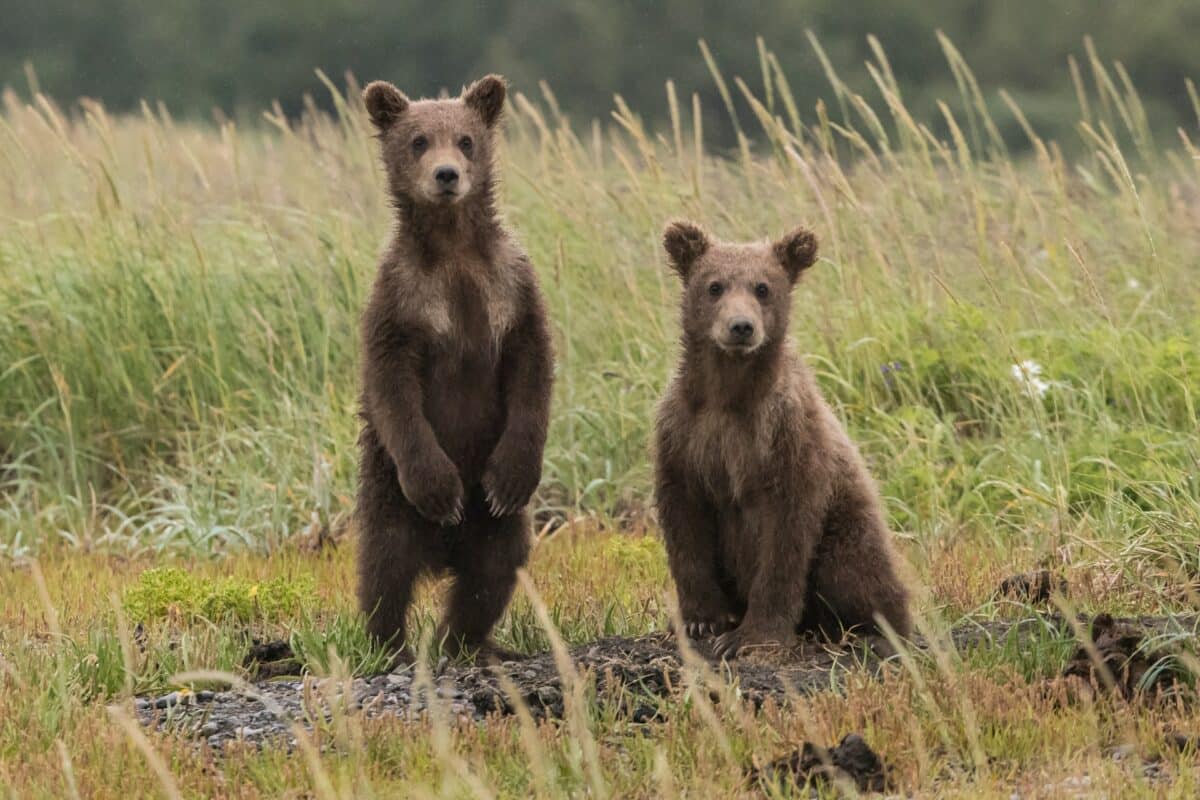
Brown Bear
Brown bears are polygamous, meaning one brown bear female mostly mates with more than one male or a few males mate with the same female.
The estrus of a female brown bear is around 10 to 30 days long.
Grizzly Bear
Grizzlies are mostly serial monogamous, meaning they have one mate at one time but each year have several mates.
Brown Bear vs. Grizzly Bear: Reproduction
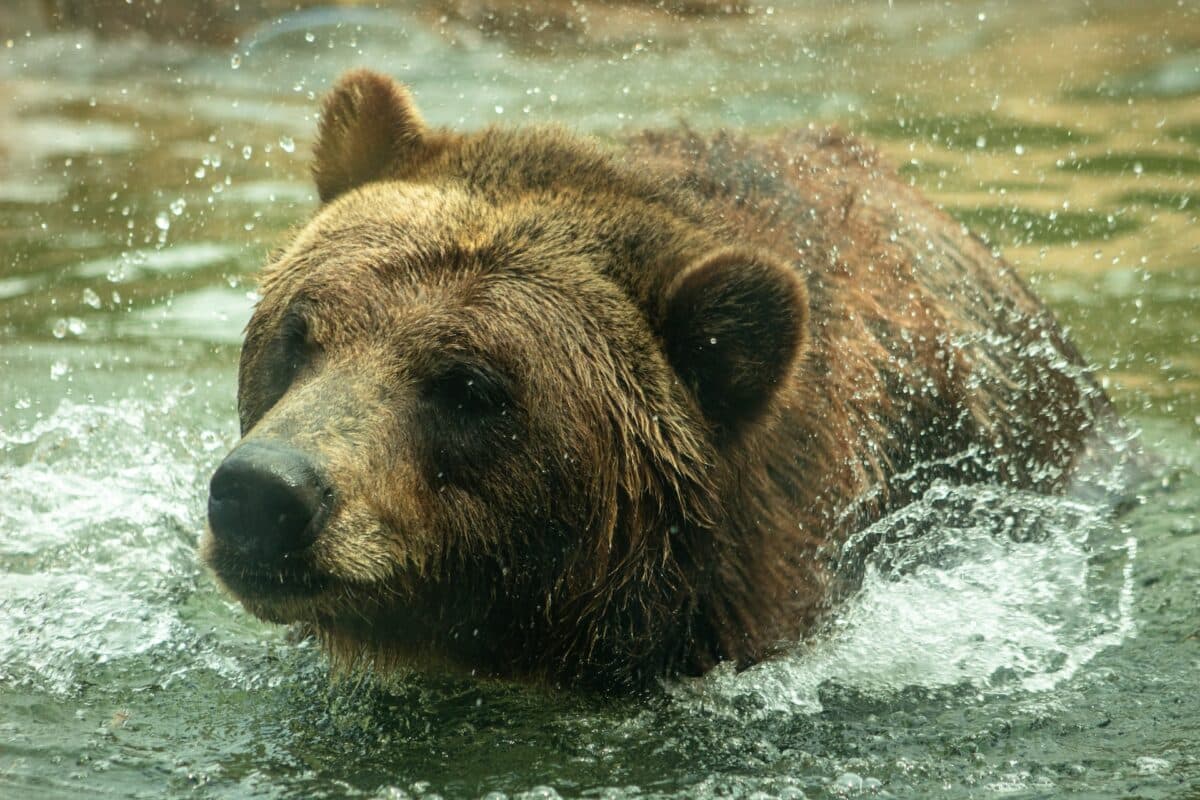
Brown Bear
The female brown bear does not only mate with one male brown bear; instead, it mates with many male brown bears that live in that particular region. Males fight with each other over females and protect them for about 7 to 21 days. The mating season stretches from May to July.
When the female brown bear undergoes her winter sleep, the young brown bear starts developing inside the mother’s uterus.
Grizzly Bear
Like other animals, the grizzly bear reproduces sexually to increase their number. The grizzlies mate between May and July, and the male and female grizzlies go their separate ways after mating.
Female grizzlies that are 3 to 8 years old undergo the process of reproduction in order to give birth to a litter.
The reproductive rate of a grizzly bear is the slowest among all terrestrial mammals.
Facts
Brown Bear Facts
Here are some incredible facts about brown bears that make them even more interesting than they already are, let’s take a look:
- Regardless of a brown bear’s weight, they cover small distances at about 30 miles per hour.
- At birth, the brown bear cubs have no fur and are blind.
- Brown bears like to spend time alone. However, during mating season, they walk by twisting their feet to secrete the chemical from the glands in their feet.
- In the wild, the brown bars are vigorous at night and dusk.
- The average age of wild brown bears is between 20 to 30 years.
- The largest living predator in Europe is the brown bear, whereas, in North America, it is considered the second largest predator.
Grizzly Bear Facts
Following are some fascinating facts about grizzly bears.
- Due to logging, hunting, mining, and development, the population of grizzly bears has drastically shrunk as of late. In Canada, grizzlies are hunted legally for trophies.
- Each day the grizzlies may consume up to 90 lbs of food.
- The shoulder hump of a grizzly bear is a big muscle.
- The adult grizzlies are relatively small.
- Grizzly cubs stay with their mama for up to three years for nursing. Although the mother grizzlies produce milk for around three years, the cubs start eating solid food at a very young age and thus stop depending on mother milk.
- Grizzly bears got their name because their fur can be tipped with white hair, giving them a grizzled appearance, especially in sunlight.
What To Do If You Ever Come Across a Wild Brown Bear Or Grizzly Bear
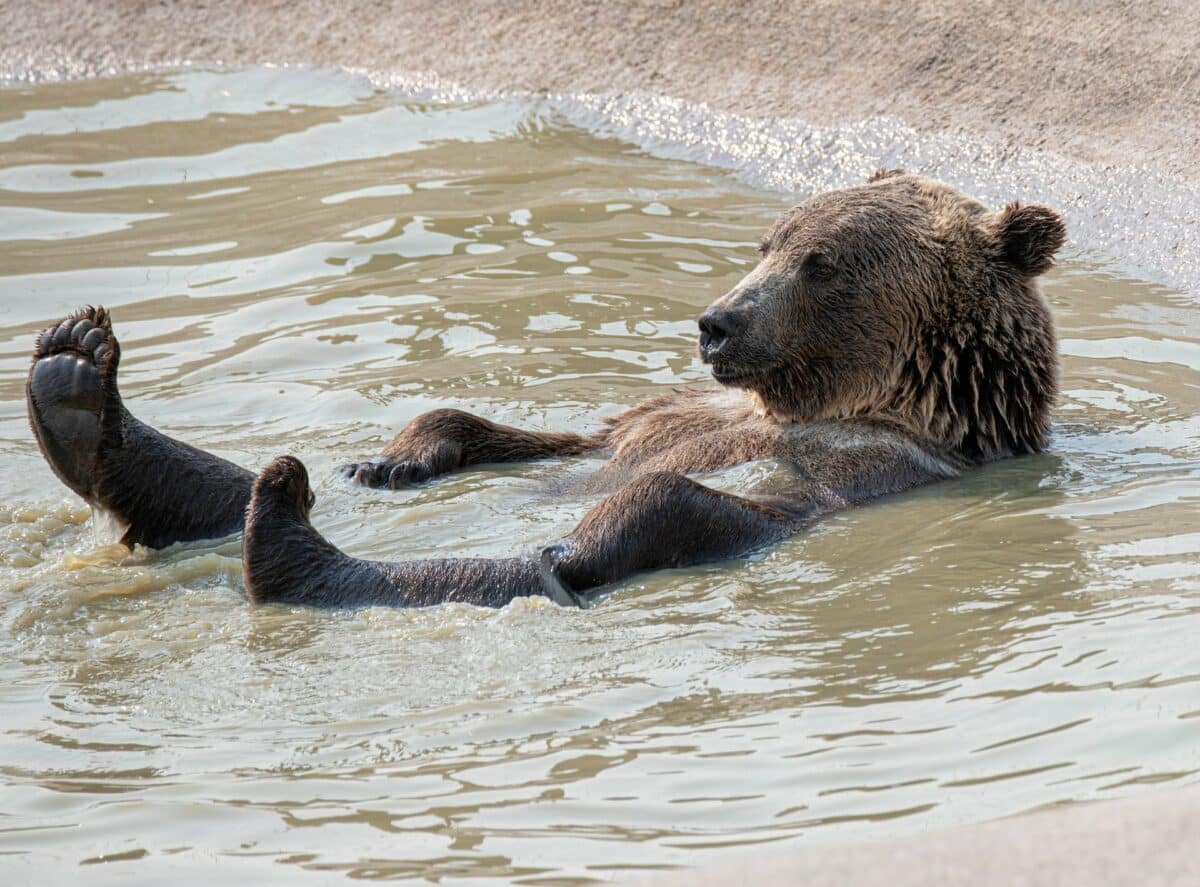
In the wild, it is quite rare that you will come across a brown bear or grizzly bear. Because they have a powerful sense of smell, they leave the area and go from that place when they sense a human coming. However, in case you ever meet the bear, do these things.
- Talk deeply and loudly.
- Never run; instead, slowly back away.
- Attempt to appear bigger to the bear if possible.
- If a bear comes and is about to attack, act as if you are dead and lie down on the floor in the fetal position or face down and keep your arms on your neck.
Frequently Asked Questions
What animals can defeat a brown bear?
Adult brown bears are on the top of the food chain because they are the most dangerous and aggressive and therefore have no predators. But the brown bear cubs have predators such as tigers, coyotes, cougars, wolves, and humans.
What bear is bigger than a grizzly?
Other than the brown bear, the Ursus maritimus, commonly called the polar bear, is larger than the grizzly bear and is considered the biggest terrestrial carnivore.
Is the brown bear larger than a grizzly?
Grizzly bears are smaller than brown bears. The average height of a brown bear is 3 to 10 feet, whereas grizzlies are 5 to 8 feet long.
Which bear is most muscular?
There are many bear species; among them, all the polar bears and grizzly bears have taken the title of the most robust bears. A grizzly bear is a subspecies of the brown bear, whereas polar bears are separate species.
The Final Verdict
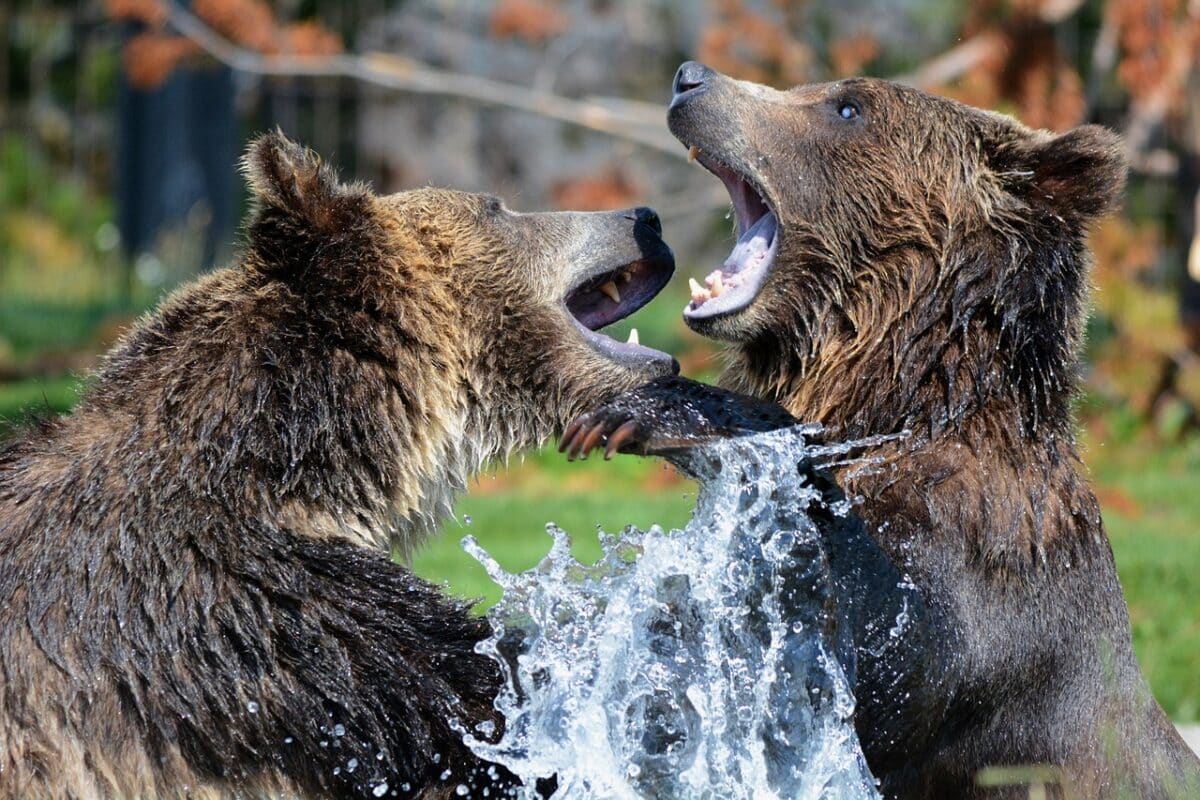
Numerous animals have various resembling characteristics, which is not surprising because animals belong to the same kingdom and possess similar traits. However, specific features differentiate animals from each other, making the two animals of even the same species different.
As we have seen in the brown bear vs. grizzly bear, although grizzlies are the subspecies of brown bears, they still appear different from each other and have different habitats and behaviors.
You might also like the article about Tiger Versus Elephant.
Brown bears and grizzlies stem from the same family, but they still compete with each other for food if they ever appear in the same region. Similarly, their physical appearances, such as their claws, paws, hump, fur color, and eyes and ear shape, make it possible to differentiate the two easily.
No doubt this earth is home for both the bears; therefore, their conservation, protection, and preservation are essential so that they survive in their natural habitats happily.
Have you ever seen a brown bear or grizzly bear? Could you identify which one was a brown bear or a grizzly bear? If you come across one again, you will definitely be able to distinguish them after having read this comparative analysis of the two.
Thank you for reading this article about the brown bear vs. grizzly bear! Maybe this has spiked your interest for seeing one of these dangerous teddies in real life? Head over to read about The Best Places to See Bears.
- Magpie Bird Is Reunited with Her Dog Best Friend - April 24, 2024
- Dog Saves Another Dog From Drowning in Fish Pond - April 23, 2024
- Man On Motorbike Rescues Cat From Highway - April 23, 2024

